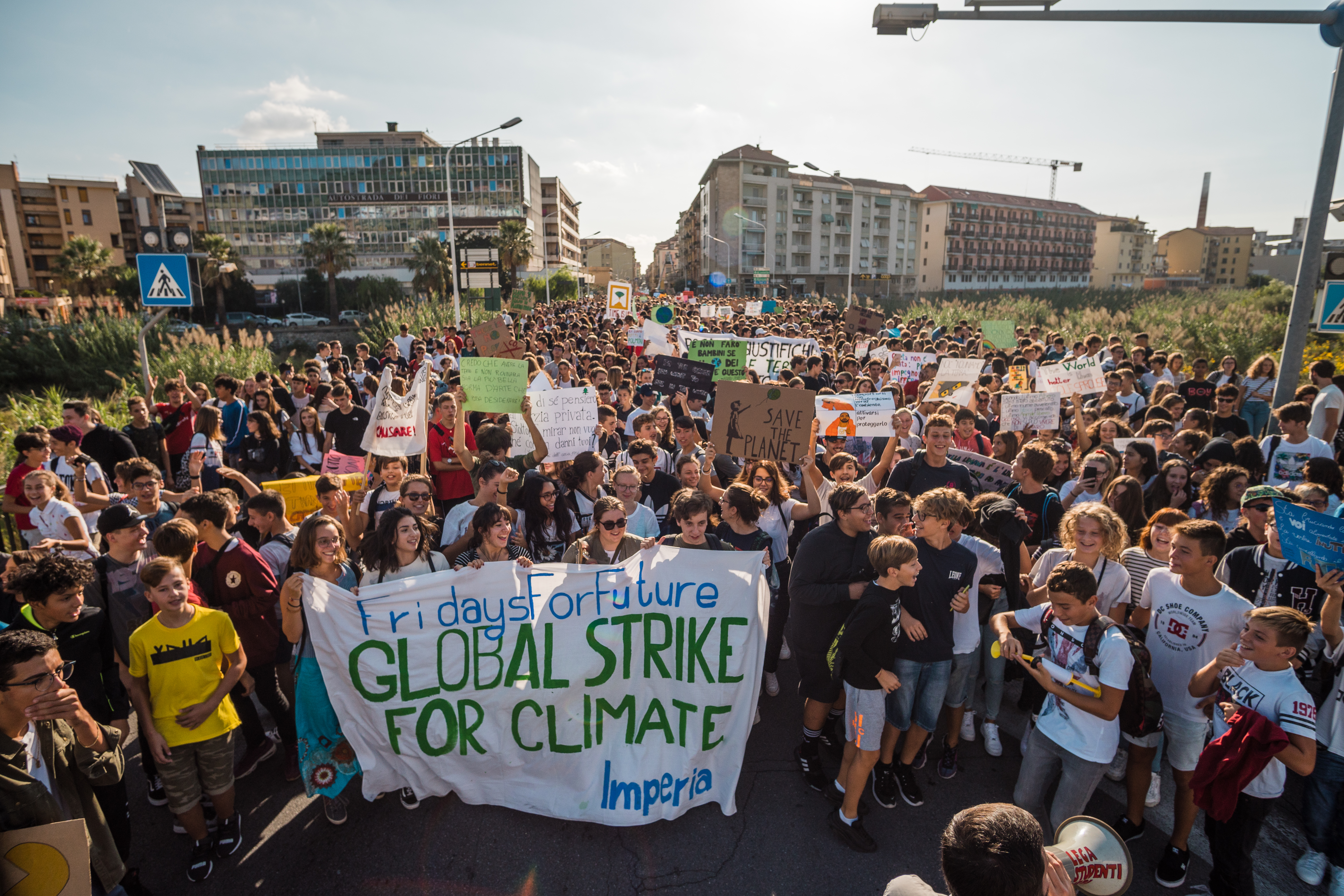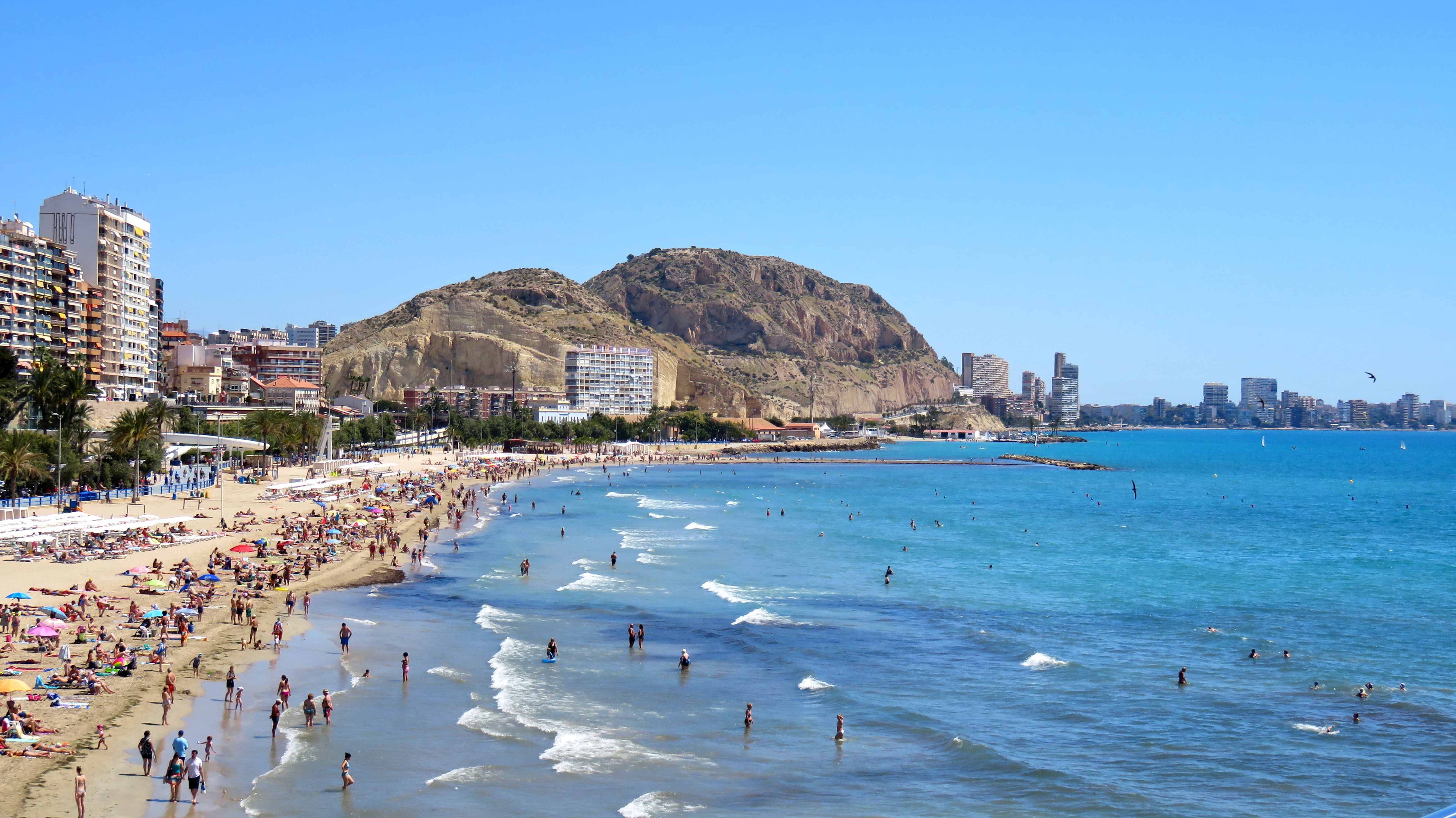20-10-2019
Tourism and climate change in the Mediterranean region
Marta Salvador | Alba SudClimate change can lead to profound changes in the tourism industry in the Mediterranean and in the very societies in which it develops. In turn, air transport is one of the main responsible for global warming.

Photography by: Chris Yakimov, under licence of creative commons.
The climate change phenomenon is nowadays one of the challenges that can produce big changes in the tourist industry in the Mediterranean as it is known today. This article exposes these problems, dealing with a global phenomenon in a big tourist destination as the Mediterranean region is. Firstly, the paper contextualizes the climatology of this destination, where temperatures are one of the motivation factors for tourists. Secondly, climate change and its possible consequences in the Mediterranean is analysed. The changes produced by the effect of this phenomenon will require a major planning and managing from all the tourist industry stakeholders. Thirdly, the article mentions how tourism contributes to climate change and which actions are being carried out in order to mitigate the negative impacts. Finally, a series of reflexions that must be taken into account in future academic studies about climate change and its effects upon tourism, and also for the sustainable management of destinations are exposed.
The importance of climate in the Mediterranean region
Climate factors, such as temperatures, sunshine and raining hours determine a huge part of the international tourism flows in Europe (Amelung & Viner, 2006). The popularity of the Mediterranean region is highly linked to the climate and temperatures, which are one of the most important resources of a tourist destination. Moreover, as Nicholls (2006) affirms, the motivation of tourists when choosing their travel destination is mostly associated with these factors.
The warm Mediterranean weather makes this place one of the best locations for sea and Sun tourism during the summer period, especially in the north of the Mediterranean. It happens the same on the coasts of Morocco and Algeria, as a consequence of the cooling effect of the altitude of the Atlas Mountains, but not on the rest of North Africa, where temperatures are better in spring and autumn (Amelung & Viner, 2006).
In general, countries from the Mediterranean region have cold winters with moderate raining and warm and dry summers, although the lack of precipitations can be problematic regarding water supply and fire risks (Nicholls, 2006). The climatic preferences for beach holidays in the Mediterranean are defined by ideal temperatures between 27º and 32ºC. On the other hand, climatic preferences for vacations in urban regions of the Mediterranean vary between 20º and 26ºC (Rutti & Scott, 2010).
Due to these great differences between the seasons of the year, seasonality becomes a key issue in the profitability of tourism in the Mediterranean region (Amelung & Viner, 2006). This seasonality has social, economic and environmental consequences, due to the fact that impacts assumed by the destination in a touristic level present large differences throughout the year. Some examples would be the construction of infrastructures which are only amortized during a period of the year, the creation of unstable jobs, the increase in the consumption of resources and the production of waste, among others.
The climate change phenomenon
Nowadays, climate change is a global worrying issue which recently has had a greater mediatic impact articulated in movements such as Fridays for Future, mostly headed by young people. It is already recognized as a scientific certainty and that is why the exploration of its possible impacts in the human and natural environment is becoming increasingly urgent (Nicholls, 2006).

Fridays For Future demonstration. Source: Tommi Boom, under licence of creative commons.
Tourism is the economic activity with the maximum level of exposition on climate change effects. That makes it more vulnerable depending on the geographic area where it is developed (Olcina & Vera, 2016). All leisure activities carried out outdoors or natural tourist attractions may be affected in the future, modifying the offer of a place and, consequently, altering its demand. Thus, the main challenge that the Mediterranean faces in the future is climate change(Obrador et al., 2009; Drius, 2018).
There are evidences that the weather is changing due to the emissions of greenhouse gases and it is estimated that the medium global temperature will increase from 1,5º to 5,8ºC during the 21st century (Amelung & Viner, 2006; Nicholls, 2006; Rutti & Scott, 2010). The reasons of concern are a change in the market share in the regions of the world where an increase in temperatures can occur and where models of supply and demand highly linked to the climatology of the destination take place (Amelung & Viner, 2006).
The consequences of climate change in the Mediterranean
Climate change suggests a Mediterranean region with high temperatures in summer, making destinations be too hot for its visit (Nicholls, 2006; Rutti & Scott, 2010). However, the region would be able to become a more pleasant destination during spring and autumn. On the other hand, the north of Europe will have a more attracting weather in summer. As a result, it is probable that countries from the north of Europe could be benefited during this touristic season, as receivers of the increment of national and international tourist arrivals, at the expense of popular destinations in the south of Europe (Amelung & Viner, 2006; Nicholls, 2006; Obrador et al., 2009).
Although the Mediterranean Region can experiment a decrease of tourists during the current high season, it is probable that these drop-offs are likely to be offset by a growth of visitors in the spring and autumn months (Nicholls, 2006; Obrador et al., 2009; Rutty & Scott, 2010). There is also a potential for a much longer hot tourist season. Therefore, the demand could not decrease as a consequence of the climate change, but rather contribute to a change in the time in which tourists will visit the region in the middle and end of the century. Definitively, these changes will depend on the strength of several factors, including seasonality and the ability of the destination to adapt or take advantage of the improved weather of the spring and autumn seasons (Rutti & Scott, 2010).
Regarding the climatic comfort in tourist areas of the Mediterranean coast, an increase in the number of hot days, hot nights and the duration of heat waves is predicted. These are variables that, together with elevated humidity values of the atmosphere, are related to the origin of sensations of discomfort that can affect the demand of tourists in this destination. For this reason, as Olcina and Vera (2016) state, it is essential to know the true effects of global warming with the greatest possible degree of accuracy, understand how this can affect the tourist areas and decide what measures can be implemented to mitigate its consequences and adapt to them.
One possibility associated with the global climate change is the increase in the appearance of extreme weather events. In the Mediterranean, heat waves, winter rainfalls and gales are more probable to be intensified and frequented. Drought risk in summer will also increase due to a reduction of precipitations and the volume of water available. Moreover, an increase of the global level of sea is expected (Amelung & Viner, 2006; Nicholls, 2006; Olcina & Vera, 2016).
Climate change can also affect the distribution and composition of natural resources such as flora and fauna. Moreover, the existence of endemic plants, marine biodiversity and healthy marine ecosystem can be put at risk. Such as Amelung and Viner confirm (2006), it is difficult to evaluate tourist impacts on the biodiversity, although it is important to study them in order to guarantee the diversity of terrestrial and aquatic resources. In this way, changes in the wildlife and vegetation can be the cause of indirect impacts upon tourism and outdoor leisure activities, since participants alter their activities according to changes in the natural environment (Nicholls, 2006).
It is probable that the raise of temperatures causes a higher thermal stress and a decrease of air quality in urban areas of the Mediterranean. These changes have implications for tourism and can provoke problems for the organization of outdoor events such as festivals, concerts and sport competitions, as well as for the daily enjoyment of urban population in services, such as public parks and cafés. However, there are different adaptation strategies like increasing the implementation of air conditioner technologies, carrying out events in colder months and days or moving them indoors (Nicholls, 2006).
Adding to the consequences previously exposed, the area of North Africa can endure other effects due to its extensive desert areas. One of them is more desertification, provoking changes in the landscape and degrading the ecosystem. Extreme drought can also have effects on communities, such as the reduction of crops, the increase of fire hazard, the rise of livestock mortality and the decrease of available water. Since a great part of the economy depends on agriculture and stockbreeding, some population may be forced to migrate to other regions (Price, 2017).
In some countries of North Africa, for instance Egypt and Tunis, tourism plays an important role in the economy. For this reason, they can be specially affected by the effects of climate change, adding difficulties to an activity which is already vulnerable due to the geopolitical context of the last decades. Tourism in these countries is concentrated in coastal areas, which will receive a broader economic, social and environmental impact. Beach or leisure tourism, dominant market segment, will be vulnerable to sea level rise and extreme meteorological events exposed before. On the other hand, diving activities will be threatened by marine biodiversity loses (Shaaban & Ramzi, 2010) implying a change, both in the touristic offer and demand.

Beach in Alacant. Source: Bobglennan, under licence of creative commons.
These spatial and temporal changes provoked by climate change can have impacts on the sustainability of the tourist development. On the one hand, they can be harmful from an economic and social point of view due to the loss of tourism incomes and its value associated chain. On the other hand, they might be favourable from a resources and biodiversity management perspective, as pressures on environment and ecosystems will decrease in summer in the Mediterranean (Amelung & Viner, 2006). Nicholls (2006) affirms that changes in the visit patrons will have a direct involvement upon contracts practices, supply chain, cash flows and marketing campaigns development.
Tourist planning in front of climate change
Tourists have a huge capacity to adapt to climate change impacts, avoiding undesirable conditions, modifying the moment of their travel or moving to another destination. Therefore, it is essential to understand what climatic conditions tourists consider inappropriate for a holiday or which would reduce the quality of the experience (Rutti & Scott, 2010).
Environmental impacts mentioned before have serious implications for the future planning and development of touristic attractions in the Mediterranean region. It is also probable that water supply could become a controversial question, especially among residents and touristic attractions suppliers such as golf courts and swimming pools (Nicholls, 2006). For this reason, the tourist industry, tourist investigators and political leaders must pay more attention to climate trends and their possible impacts.
Despite this, as Olcina and Vera (2016) state, climate change and its risks have not been integrated in the regional and local planning. Actions in the design of programs still need to be included, integrating polices at different levels and scales. Concretely, actions in structural measures applicable to touristic areas; fiscal measures with environmental finalities (ecotaxes); the planning of hydric resources taking into account predictions in climate models; the planning of sanitary services in coastal touristic areas in a scenario conditioned by the emergence of extreme temperatures; and the design of education and communication programmes tackling the consequences of climate change and meteorological conditions still need to be included.
For the purpose of planning and adaptation of touristic areas of the Mediterranean coast in order to deal with climate change, dataon the future projection of the values of the temperature can be classified in four challenges. Firstly, the possibility of modifying the calendar of high season (from June to September, both included) and consider the months of May and October as very suitable for tourist stays. It is necessary to take into account that levels of massification, which would double the current temporality, can have negative consequences on the local population. Secondly, the necessity of adapting tourist accommodations and residential properties to a weather with high temperatures and humidity. Thirdly, the obligation to ensure the well designation of water supply systems in an area with a natural shortage of resources. It should also be considered that the volumes of surface water will be reduced due to a decrease in rainfall, an increase of its irregularity and an increase in the evaporation of reservoirs. Finally, the requirement of modifying civil protection and public health protocols in a local scale, since risk calendars will change (storms and heavy rains due to the presence of hot water for a longer period), as well as the frequency and intensity of the appearance of the climatic extremes (Olcina & Vera, 2016).
Such as these authors continue affirming, for the adaptation of the touristic activity, actions linked to the promotion of sustainable destinations, incentives for energy and water savings in hotels, training actions for staff and information on sustainability issues for clients are being considered. In general, what is sought is to diversify the tourism product and support sustainability, instead of specific measures to adapt to climate change.
The contribution of tourism to climate change
Although there is no mention of how tourism contributes to climate change, the increase of this sector’s popularity is associated with a spread of transport, exploitation of natural resources, etc. Concretely, the touristic activity contributes to the problem of climate change due to its dependence in the consume of fossil fuels (Nicholls, 2006). Moreover, it also contributes to global warming because of greenhouse gas emissions. As mentioned by Gössling (2002) cited by Nicholls (2006), approximately the 3,2% of global energy used is due to activities related with leisure (including transport to the destination, accommodations and activities), while the 5,3% of all carbon dioxide emissions can be attributed to leisure.
Some studies have proven how an increase in mobility levels in Europe and the growth of low-cost airlines, which will continue in the future, clearly contribute to climate change (Nicholls, 2006).

A solar panel covering the roof of a hotel. Source: Flickr, under licence of creative commons.
Nowadays, much attention is paid to the ways in which the tourism industry can help mitigate its negative impacts, through the reduction of the use of energy and greenhouse gas emissions, as well as the adoption of cleaner products and efficient technologies. This is the case of some organizations which offer tourists the opportunity to compensate their carbon dioxide emissions through the purchase of carbon offsets. The result of these systems is used to fund projects that try to reduce origin emissions, either by investing in renewable energy sources or improving the efficiency of current sources, or by increasing carbon dioxide retention rates (Nicholls, 2006).
Awareness of the tourism and climate change duality
The tourist industry must be increasingly aware of its impacts and apply measures to reduce them as much as possible. However, the linkage between tourism and climate change needs a deeper analysis and more visibility. Moreover, studies on the contribution of the tourist industry to the acceleration of the phenomenon must be broadened. This way, it will be easy to manage the effects produced by climate change and adapt to the necessities of both destinations and tourists.
It should be considered that tourism is an element that contributes to the phenomenon of climate change and, therefore, the industry has to take responsibility for the role it plays. At the same time, as mentioned above, the tourism sector is highly affected by the effects of climate change and this should be a major warning for the entire industry.
Future predictions show a continuous increase in the number of tourists and displacements in the Mediterranean region. Furthermore, predictions of climate change effects confirm that most of these arrivals will be during the spring and autumn periods, which allows for a discourse based on the enlargement of the high tourist season almost throughout the year. This very positive vision of climate change leaves behind the consequences that the destination and inhabitants may suffer, especially at an environmental level, focusing just on the economic opportunity that is presented.
On the other hand, most of the studies are only centered on changes related with temperatures and the climate, putting aside social effects, both positive and negative, that could appear in tourist destinations.
These future projections force usto reflect on the viability of the current model and rethink current policies and strategies. One of the strategies proposed mainly consists on tourist decrease, in such a way that special emphasis is placed on the planning of tourist activity. This planning can focus on the limitation of tourist arrivals, the limitation of available beds in a destination, the regulation of arrivals of cruises in the main ports of the Mediterranean or the impulse of other economic activities in areas where tourism predominates, among others.
